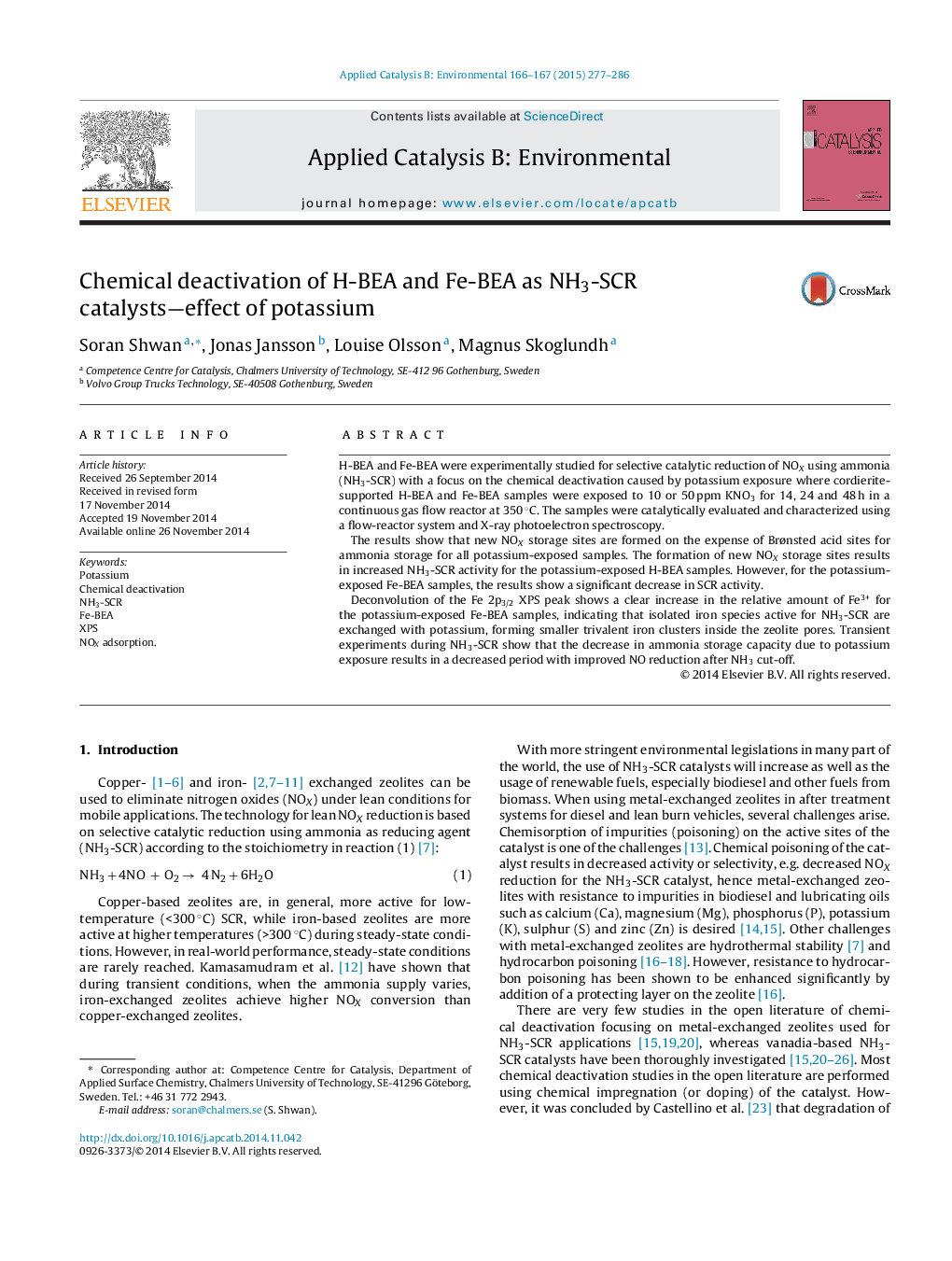| Article ID | Journal | Published Year | Pages | File Type |
|---|---|---|---|---|
| 45720 | Applied Catalysis B: Environmental | 2015 | 10 Pages |
•Potassium exposure of Fe-BEA as NH3-SCR catalyst.•Fe-BEA tolerance against chemical deactivation.•Formation of new NOX storage sites due to potassium exposure.•Increased SCR activity for H-BEA catalyst due to potassium exposure.•Decreased SCR activity for Fe-BEA catalyst due to potassium exposure.
H-BEA and Fe-BEA were experimentally studied for selective catalytic reduction of NOX using ammonia (NH3-SCR) with a focus on the chemical deactivation caused by potassium exposure where cordierite-supported H-BEA and Fe-BEA samples were exposed to 10 or 50 ppm KNO3 for 14, 24 and 48 h in a continuous gas flow reactor at 350 °C. The samples were catalytically evaluated and characterized using a flow-reactor system and X-ray photoelectron spectroscopy.The results show that new NOX storage sites are formed on the expense of Brønsted acid sites for ammonia storage for all potassium-exposed samples. The formation of new NOX storage sites results in increased NH3-SCR activity for the potassium-exposed H-BEA samples. However, for the potassium-exposed Fe-BEA samples, the results show a significant decrease in SCR activity.Deconvolution of the Fe 2p3/2 XPS peak shows a clear increase in the relative amount of Fe3+ for the potassium-exposed Fe-BEA samples, indicating that isolated iron species active for NH3-SCR are exchanged with potassium, forming smaller trivalent iron clusters inside the zeolite pores. Transient experiments during NH3-SCR show that the decrease in ammonia storage capacity due to potassium exposure results in a decreased period with improved NO reduction after NH3 cut-off.
Graphical abstractFigure optionsDownload full-size imageDownload as PowerPoint slide
